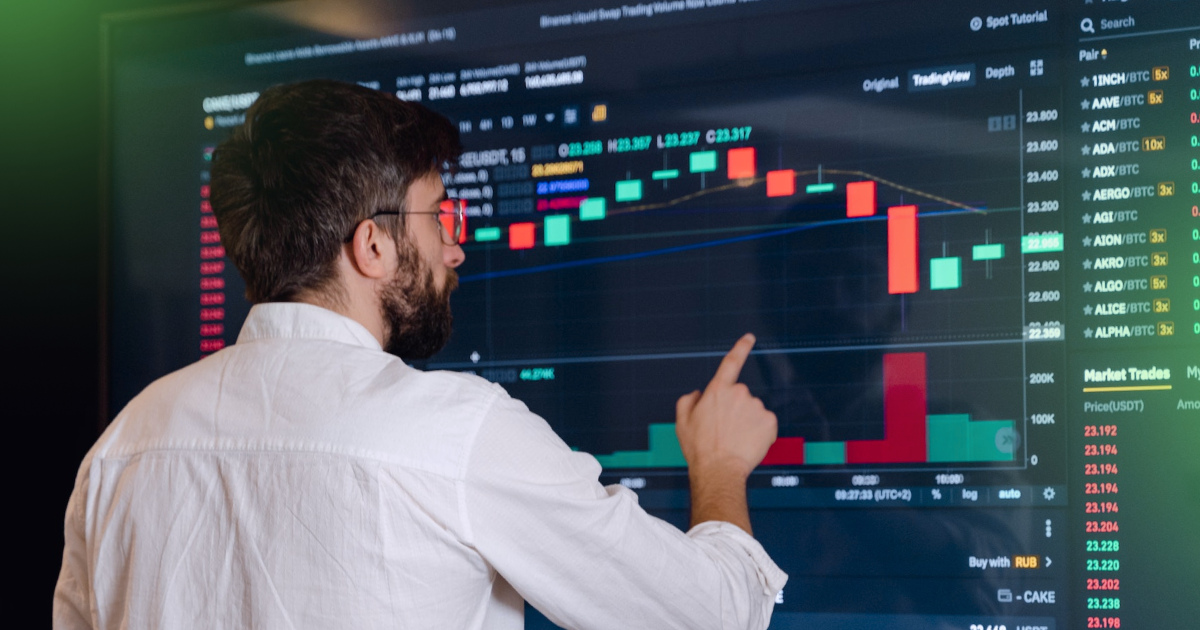The Pitfalls of Nonstop Chart Monitoring for Beginners: A Comprehensive Guide

In the world of trading, it's natural for beginners to feel a strong attachment to their trades and an urge to monitor the charts constantly. However, this approach can lead to some significant mistakes and negatively impact their overall trading performance. This guide will discuss the reasons behind the detrimental effects of nonstop chart monitoring and provide alternative strategies for managing trades more effectively.
Emotional Decision-Making
Constantly monitoring charts can heighten emotions and lead to impulsive decision-making. Anxiety and stress can cloud judgment and result in overtrading or prematurely closing out trades. Instead of reacting to every market fluctuation, it's essential to have a plan in place and stick to it. Set entry and exit rules ahead of time and only make adjustments when they align with your overall trading strategy.
Misinterpreting Market Noise
Focusing too much on short-term fluctuations can cause traders to lose sight of the bigger picture. It's important to consider the time frame you're trading on and understand the difference between market noise and significant trends. Constant chart monitoring can lead to knee-jerk reactions that don't align with long-term goals. Instead, take a step back and evaluate the bigger picture.
Impact on Risk Management
Constant chart monitoring can cause traders to adjust their risk management strategies unnecessarily. Moving stop losses or taking profits prematurely can result in missed opportunities or larger losses. Stick to your risk management plan and only make adjustments based on market conditions when necessary.
Loss of Focus and Productivity
Spending too much time monitoring charts can lead to cognitive fatigue, neglecting other trading opportunities, and poor time management. It's significant to strike a balance between monitoring your trades and staying focused on your overall trading strategy. Implement periodic monitoring and analysis to manage your trades effectively while also leaving time to pursue other opportunities.
Developing a Healthy Trading Routine
To avoid the pitfalls of nonstop chart monitoring, it's essential to establish a well-structured trading routine. Set entry and exit rules based on your overall trading strategy, diversify your trading portfolio, and implement periodic monitoring and analysis to manage your trades effectively. Avoid reacting to every market fluctuation and focus on the long-term goals of your trading strategy.
Another key element of a well-structured trading routine is keeping a trading journal, particularly if you are involved in crypto trading. A crypto trading journal is a record of all your trades, including the details of each transaction, such as the date, time, asset, position size, entry and exit prices, stop loss and take profit levels, and any relevant notes about the trade.
Here are some benefits of keeping a crypto trading journal:
- Helps in self-reflection: Reviewing your trading journal regularly can help you identify patterns and behaviors that may be negatively affecting your trading performance.
- Improves decision-making: By tracking and analyzing your trades, you can identify which trading strategies are working for you and which ones are not, enabling you to make better trading decisions in the future.
- Keeps you accountable: Maintaining a trading journal holds you accountable for your trading decisions, helping you avoid impulsive and emotional trading.
- Provides a historical record: A trading journal serves as a historical record of your trades, which can be useful for tax purposes or to track your progress over time.
When choosing a crypto trading journal, consider using a spreadsheet or specialized software that allows you to easily input and analyze your trade data. Make sure to include all relevant information about each trade, including the reason for entering the trade and the outcome.
In summary, keeping a crypto trading journal can be an invaluable tool for traders looking to improve their trading performance. By tracking and analyzing your trades, you can identify areas for improvement, make better trading decisions, and ultimately achieve your trading goals.
Conclusion
In conclusion, nonstop chart monitoring can lead to significant mistakes and negatively impact overall trading performance. Emotional decision-making, misinterpreting market noise, and unnecessary adjustments to risk management strategies can all hurt trading results. By implementing a well-structured trading routine that includes setting entry and exit rules, diversifying your trading portfolio, and periodic monitoring and analysis, beginner traders can avoid these pitfalls and build a solid foundation for long-term trading success.
